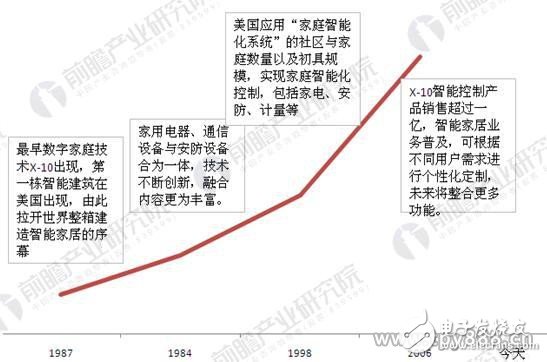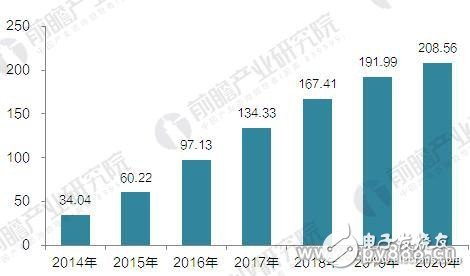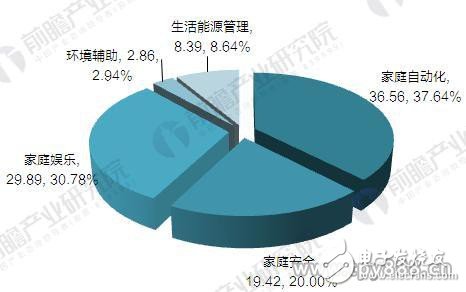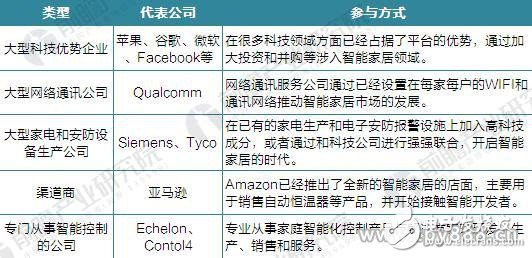In 2017, it can be said that the rise of artificial intelligence, various brands are promoting their own smart products, the competition is quite fierce. Smart TVs and smart speakers related to smart voice; smart robots and unmanned cars related to AI technology; virtual reality and real-world applications related to AR and VR all push artificial intelligence to the top. Of course, with more and more artificial intelligence products, it is inevitable that household products such as TVs and stereos will update and iterate during this period. Coupled with big data and the Internet, the smart home model will gradually enter people's daily life.
The United States has a deep relationship with smart homes. Since the world ’s first smart building appeared in the United States in 1984, the United States, Canada, Europe, Australia, and Southeast Asia have developed various smart home solutions. Smart homes It has been widely used in the United States, Germany, Singapore, Japan and other countries.
As the living environment in the United States is dominated by villas and detached houses, the development of smart homes has focused more on the connectivity of information networks and the control of home entertainment. At the same time, the continuous innovation and promotion of smart home technology has reduced the unit price of smart homes, which has effectively promoted the promotion of smart home equipment.
Overall, the US smart home industry has probably experienced four stages and has now entered a stage of rapid development. The rapid development stage is mainly marked by X-10 intelligent control products. The smart home business is popularized and personalized customization services can be provided.
Chart 1: Development history of the US smart home market

The United States is the world's largest market for residential automation systems and equipment. At present, its smart home industry has matured, the market has begun to take shape, and the industry chain is complete. According to the data of the "Forward Forecast and Investment Strategy Planning Report of China's Smart Home Equipment Industry Market 2018-2023" released by the Foresight Industry Research Institute, the United States, as the country with the largest smart home market in the world and the highest penetration rate, in the past three years, its smart home The market capacity is increasing, from US $ 3.404 billion in 2014 to US $ 6.022 billion in 2015 to US $ 9.7125 billion in 2016, with an average annual growth of nearly US $ 3 billion. In the future, with the global outbreak of the smart home industry, household penetration will gradually deepen. It is expected that by 2020, the US smart home market capacity will exceed 20 billion US dollars.
Chart 2: 2014-2020 US smart home market size and forecast (unit: 100 million US dollars)

Judging from the market size of the US smart home segment, its smart home products are mainly home automation, home security, and home entertainment. For example, in the US market, the penetration rate of home central air-conditioning has exceeded 70%, and 85% of households are equipped with central thermostats for heating equipment, and 60% of households are equipped with central thermostats for refrigeration equipment, represented by smart thermostats. Of smart energy-saving products are favored.
In each segment of the US smart home in 2016, home automation was $ 3.656 billion, accounting for 37.64%; home security was $ 1.942 billion, accounting for 20.0%; home entertainment was $ 2.989 billion, accounting for 30.78%; environmental assistance It was 286 million US dollars, accounting for 2.95%; life energy management was 839 million US dollars, accounting for 8.64%.
Exhibit 3: Market size and proportion of the US smart home segment in 2016 (unit: USD 100 million,%)

In recent years, many giants in the United States have been optimistic about the development prospects of the smart home industry and have entered the smart home industry: in January 2014, Google acquired Nest for US $ 3.2 billion, setting off a smart home boom; after that, AT & T, the largest wireless communication service provider in the United States (NYSE: T) and US cable giant Comcast (Comcast Corp), both announced the entry into the field of home security and automation.
In June 2015, Apple released the first batch of HomeKit smart home products. These products can control lights, room temperature, fans and other household appliances through iPhone, iPad or iPod Touch.
On January 4, 2016, Facebook CEO Mark Zuckerberg announced that 2016 will challenge artificial intelligence technology and develop artificial intelligence technology that can control the home environment.
The game of the American technology giant in the field of smart home has proved the potential of this market. Compared with the emphasis on lighting control and other functions in China's domestic smart home market, the United States has a relatively mature home security market, and the security company has a relatively extensive residential customer group, so the main promotion is mainly home security companies, in addition to Control4, Elan The representative manufacturers highlight the home audio and video entertainment functions.
Exhibit 4: Competition of US smart home participants

Polycrystalline sillicon (also called: polysilicon, poly crystal, poly-Si or also: multi-Si, mc-Si) are manufactured from cast square ingots, produced by cooling and solidifying molten silicon. The liquid silicon is poured into blocks which are cut into thin plates. The solidification of the material results into cells that contain many crystals, making the surface of the poly-Si/ mc-Si cell less perfect than its mono-Si counterpart. Due to these defects, polycrystalline cells absorb less solar energy, produce consequently less electricity and are thus less efficient than monocrystalline silicon (mono-Si) cells. Due to their slightly lower efficiency, poly-Si/ mc-Si cells are conventionally a bit larger, resulting in comparably larger PV modules, too. This factor has to be considered if space is limited. Nevertheless, the advantage of poly-Si/ mc-Si cells is that they are easier and thus cheaper to produce.
Poly Solar Cell,Solar Photovoltaic Cell,Most Efficient Solar Cell,Polycrystalline Solar Cells
Wuxi Sunket New Energy Technology Co.,Ltd , https://www.sunketsolar.com